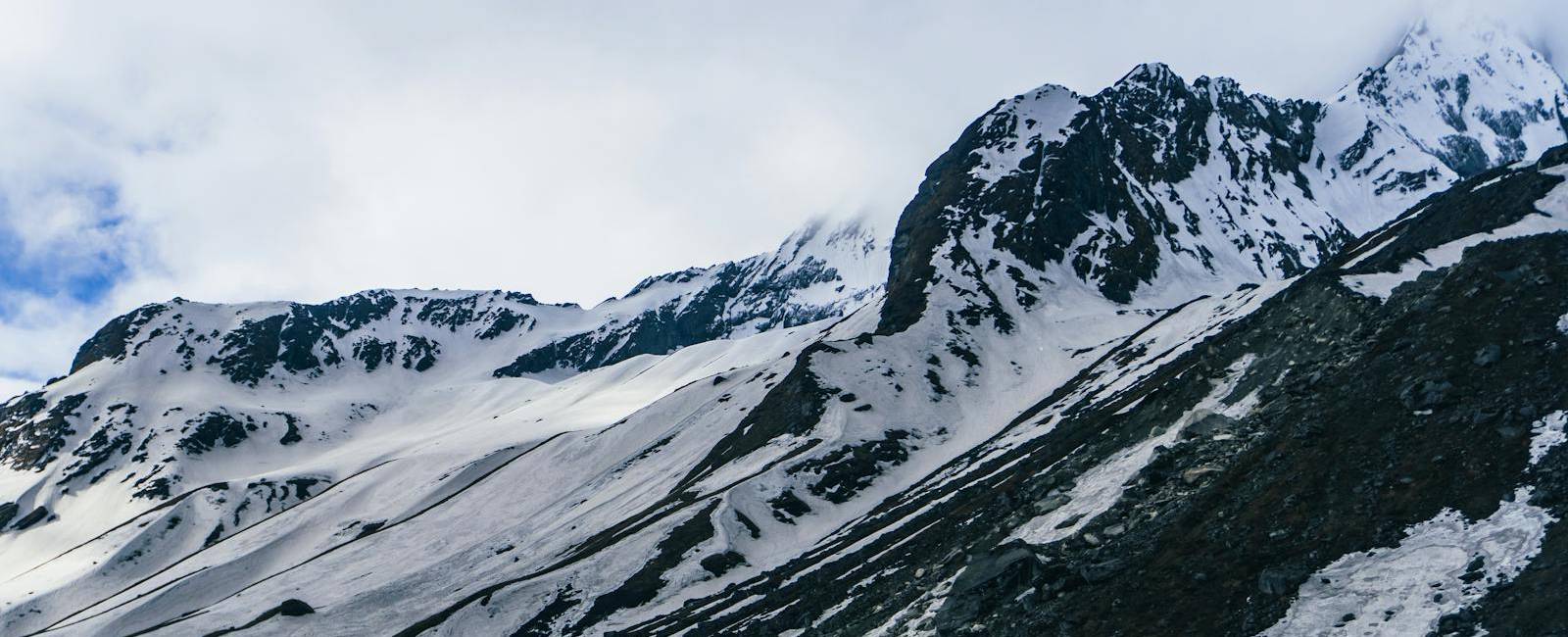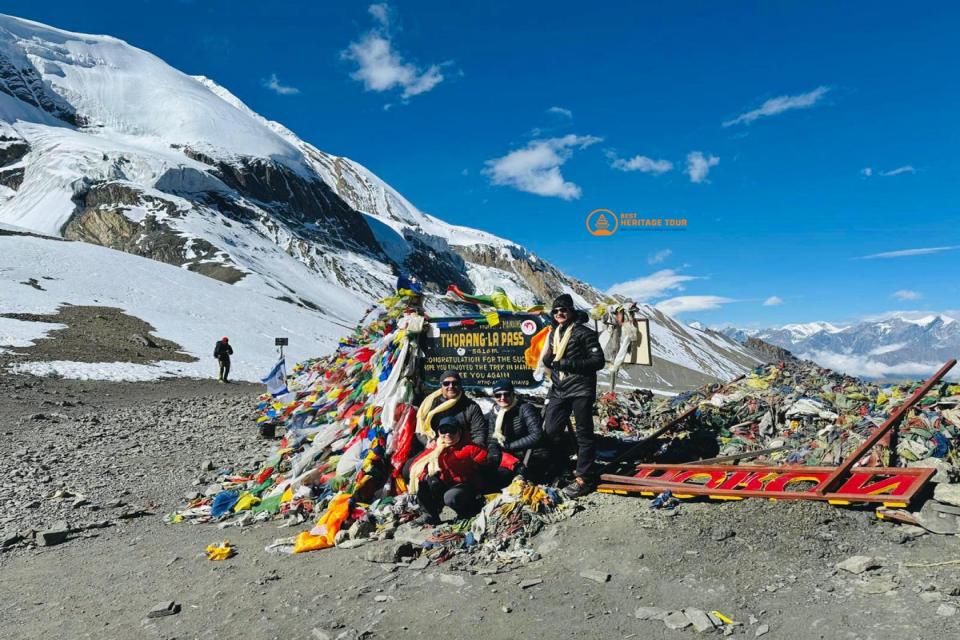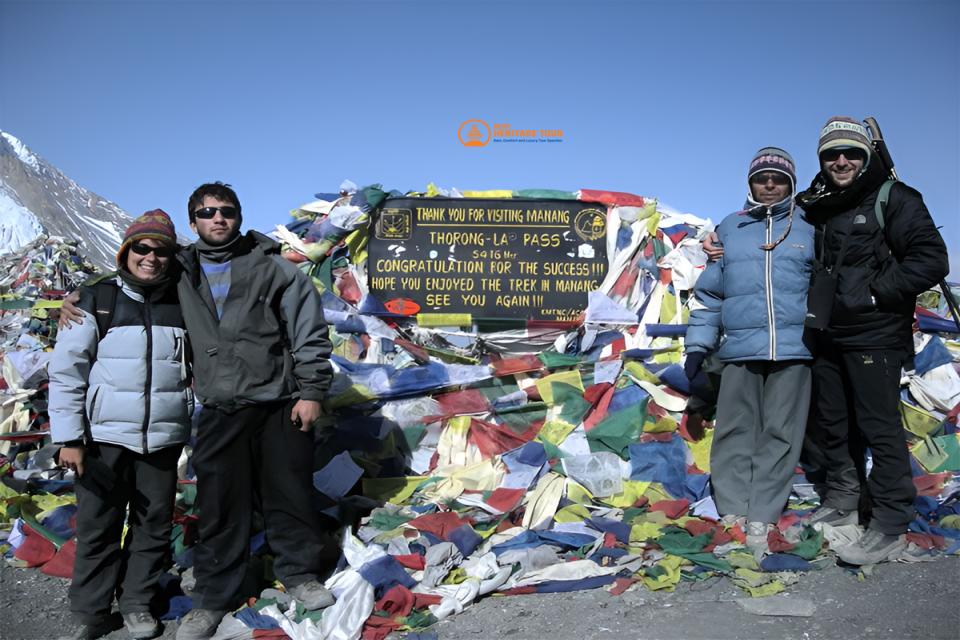The Annapurna Circuit Trek is a legendary Himalayan journey that spans lush lowlands, alpine forests, arid valleys, and the dramatic Thorong La Pass at 5,416 meters. Packing right is the key to comfort, safety, and an unforgettable experience.
This detailed packing list will help you stay warm on chilly mountain nights, dry during rain or snow, and agile across stone staircases, suspension bridges, and high passes.
1. Upper Body Clothing
The Annapurna Circuit demands a smart layering system to handle temperature shifts across altitudes:
-
Moisture-Wicking Base Layers (2–3) – Keeps you dry and regulates body heat.
-
Insulating Fleece Jacket / Softshell – Mid-layer warmth for mornings and shade.
-
Down Jacket (Compact & Warm) – Must-have for high camps and early starts over Thorong La.
-
Waterproof / Windproof Shell Jacket – Shields against sudden weather at altitude.
-
Quick-Dry Trekking Shirts (2–3) – Breathable and easy to layer.
-
Light Hoodie or Thermal Pullover – Adds comfort on cooler days.
2. Lower Body Clothing
You’ll be trekking across a wide range of altitudes, from subtropical forests to snowy passes:
-
Lightweight Trekking Pants (2 pairs) – Convertible pants are great for warm days.
-
Thermal Base Layers (1–2 pairs) – Essential at higher altitudes.
-
Waterproof Pants / Poncho – Especially useful during monsoon or early spring.
-
Breathable Underwear (3–4 pairs) – Quick-dry fabric preferred.
3. Head & Hand Gear
Protect yourself from the sun, wind, and cold:
-
Sun Hat / Cap – Necessary at lower, sunnier sections.
-
Warm Woolen Hat / Beanie – Keeps heat in above 3,000m.
-
Buff / Neck Gaiter – Multi-use for dust, wind, and warmth.
-
Sunglasses with UV Protection – A must for snow glare and high sun exposure.
-
Headlamp (plus extra batteries) – Vital for early starts and teahouse evenings.
-
Fleece or Merino Gloves – Light warmth and dexterity.
-
Insulated Waterproof Gloves (Optional) – Ideal for snow or frost-prone days near Thorong La.
4. Footwear & Socks
Tough trails need reliable gear underfoot:
-
Sturdy Hiking Boots (Waterproof & Broken-In) – With ankle support for rocky paths.
-
Camp Shoes / Sandals – Let your feet rest at the teahouses.
-
Wool Trekking Socks (3–4 pairs) – Stay dry, warm, and blister-free.
-
Sock Liners (Optional) – Reduce friction and add comfort.
5. Bags & Trekking Essentials
Stay organized and light on your feet:
-
Backpack (40–50L) – Lightweight with hip support and rain cover.
-
Daypack (15–25L) – For your essentials if you hire a porter.
-
Backpack Rain Cover: Vital for monsoon treks and sudden downpours.
-
Trekking Poles – Crucial for steep climbs and downhill sections.
-
Water Bottles / Hydration System (2L+) – Avoid dehydration at altitude.
-
Water Purification Tablets / Filter Bottle – Safe drinking water throughout.
-
Sleeping Bag (Rated to -10°C) – High passes and lodges get cold.
-
Quick-Dry Towel – Compact and practical for teahouse use.
6. Toiletries & Personal Hygiene
Stay clean and healthy on the trail:
-
Toilet Paper / Tissues
-
Wet Wipes / Hand Sanitizer
-
Biodegradable Soap or Shampoo
-
Toothbrush & Toothpaste
-
Sunscreen (SPF 30+)
-
Lip Balm (with SPF)
-
Menstrual Products (if applicable)
7. Health, Safety & Electronics Items
Altitude, long days, and remote terrain call for preparation:
-
Basic First Aid Kit – Include altitude meds (Diamox), blister care, painkillers, etc.
-
Bug Spray: Especially important during monsoon or forested sections.
-
Insect Repellent – Useful at lower elevations.
-
Power Bank / Solar Charger – Power access is limited in remote villages.
-
Camera / Smartphone: Sunrise from Poon Hill is a memory you’ll want to capture.
-
Offline Trekking App or Map – Great for route awareness and independence.
-
Travel Insurance (with helicopter evacuation) – Non-negotiable for high passes.
8. Essential Documents & Money
Paperwork and cash are your lifeline on the trail:
-
Passport (with 2+ copies)
-
ACAP Permit & TIMS Card – Mandatory for all Annapurna trekkers.
-
Passport-Sized Photos – Required for permits and checkpoints.
-
Travel Insurance Certificate
-
Cash (in Nepali Rupees) – No ATMs after leaving Besisahar.
Optional (but Useful) Extras
-
Energy Bars / Electrolytes / Dry Fruits – Boost during long climbs.
-
Notebook / Pen – Journal your Himalayan journey.
-
Small Lock – Secure your bag at teahouses.
-
Earplugs & Eye Mask – For better rest in shared rooms.
-
Duct Tape / Repair Kit – Emergency fixes for gear.
Final Tips for Annapurna Circuit Trekkers
-
Pack smart, not heavy – Every gram adds up on mountain ascents.
-
Break in your boots – Avoid blisters and discomfort.
-
Layer like a pro – Weather changes quickly in the mountains.
-
Stay hydrated and rest well – Helps with altitude adjustment.
-
Respect locals and nature – Dress modestly and follow Leave No Trace ethics.
Gear Up for the Adventure of a Lifetime
The Annapurna Circuit Trek offers a life-changing experience through ever-shifting landscapes and ancient villages. With this gear list, you’re set for a rewarding journey across valleys, up snowy passes, and through the cultural heart of the Annapurna region.



